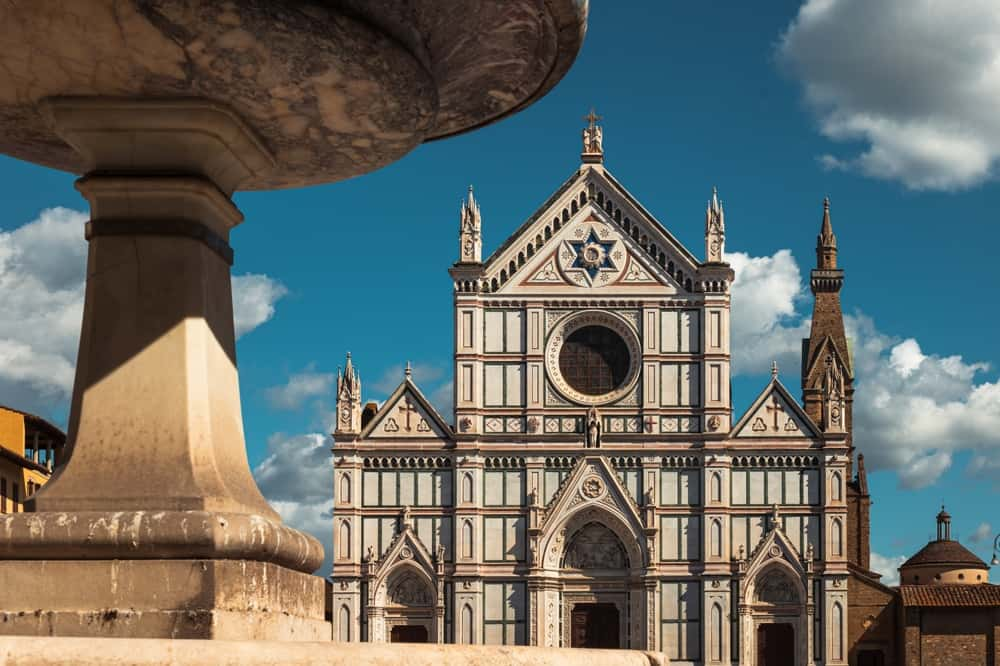
Santa Croce Church
History of The Santa Croce Church
The history of The Santa Croce Church is a fascinating narrative, a chronicle of faith, art, culture, and architectural innovation that spans centuries. The church's inception dates back to the 13th century when the Franciscan order decided to build a new church in Florence. The construction was an arduous task, a venture that continued for centuries and bore witness to the changing architectural styles and socio-cultural dynamics of the time.
The Santa Croce Church's initial design was a testament to the Gothic architectural style, characterized by pointed arches, ribbed vaults, and flying buttresses. However, as centuries passed, the church underwent several renovations and additions, each reflecting the architectural trends of the time. This amalgamation of styles has resulted in a unique blend of Gothic and Renaissance elements, making The Santa Croce Church an architectural marvel.
The Santa Croce Church's history is not just a story of architectural evolution; it is also a tale of the many illustrious personalities who have found their final resting place within its hallowed halls. From renowned artists to eminent scientists, The Santa Croce Church has become a mausoleum for some of the most notable figures in history, adding another layer of intrigue to its already rich narrative.
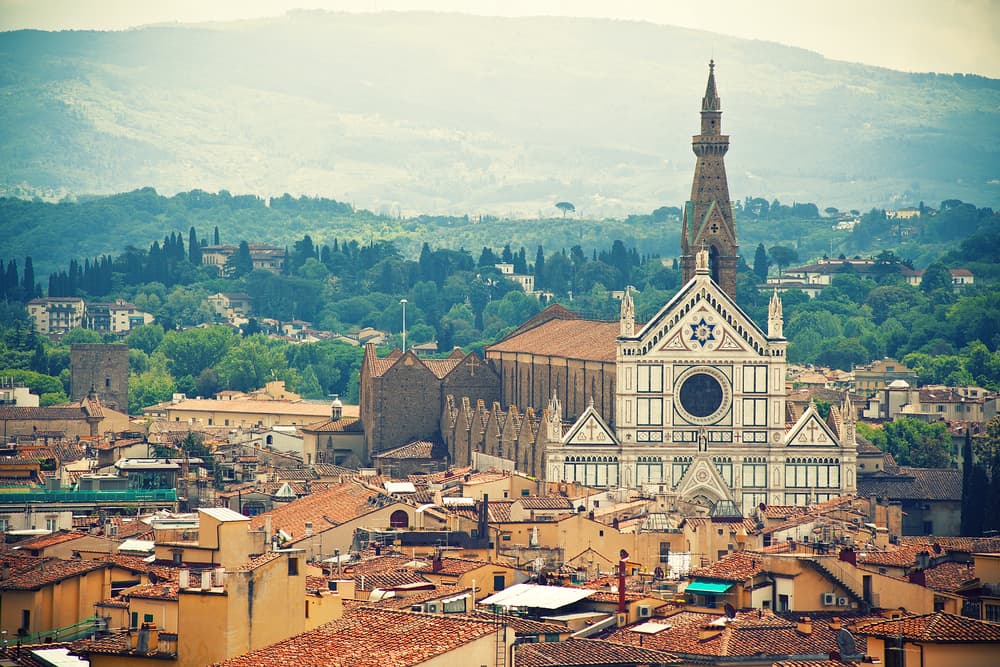
Architectural Details of The Santa Croce Church
The architectural prowess of The Santa Croce Church is perhaps one of its most striking features. The church, with its intricate detailing, grand scale, and harmonious blend of styles, stands as a testament to the architectural brilliance of the time. The façade, with its intricate carvings and grand scale, is a sight to behold, setting the tone for the marvels that lie within.
The interior of The Santa Croce Church is a maze of chapels, each possessing its unique charm and artistic merit. The chapels are adorned with frescoes by some of the greatest artists of the time, their vibrant colors and intricate detailing adding to the church's aesthetic appeal. The towering ceilings, ornate altar, and grand pulpit further accentuate the church's architectural grandeur.
The Santa Croce Church's most notable architectural feature is perhaps its campanile or bell tower. The towering structure, with its pointed arches and intricate detail, lends a unique charm to the church's facade. The campanile, with its stunning views of the city, offers visitors a unique perspective of Florence, enhancing the overall experience of visiting The Santa Croce Church.
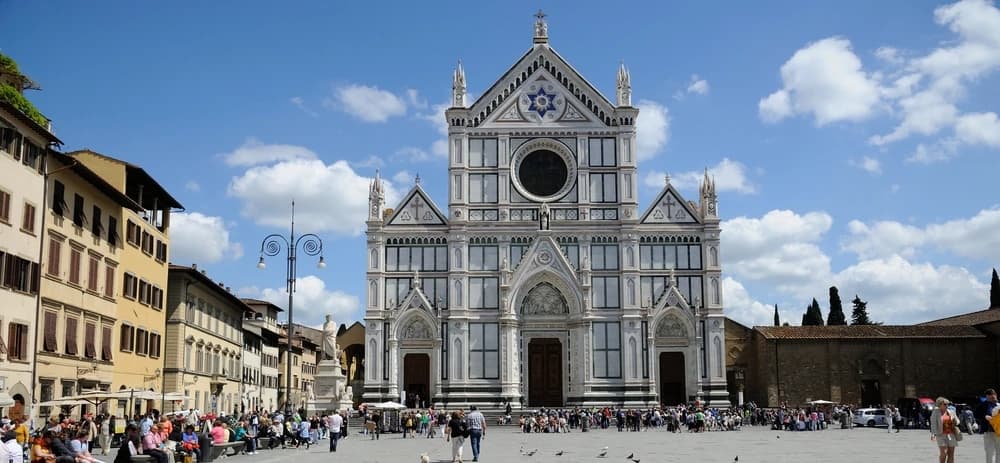
Famous Personalities Interred at The Santa Croce Church
The Santa Croce Church is not just a marvel of art and architecture; it is also the final resting place of many eminent personalities. The church's hallowed halls serve as the mausoleum for some of the most illustrious figures in history, their tombs a testament to their invaluable contributions to art, science, and culture.
Among the many notable figures interred at The Santa Croce Church is Michelangelo, the legendary sculptor, painter, and architect whose genius shaped the Renaissance. The tomb of Galileo Galilei, the renowned astronomer, physicist, and engineer, also finds a place in the church, his contributions to the field of science forever immortalized in stone.
The Santa Croce Church also houses the tombs of other distinguished personalities like Gioachino Rossini, the famous composer, and Niccolò Machiavelli, the celebrated historian and political philosopher. The presence of these illustrious figures adds a layer of intrigue to the church, making a visit to The Santa Croce Church akin to a journey through a living museum of history and culture.
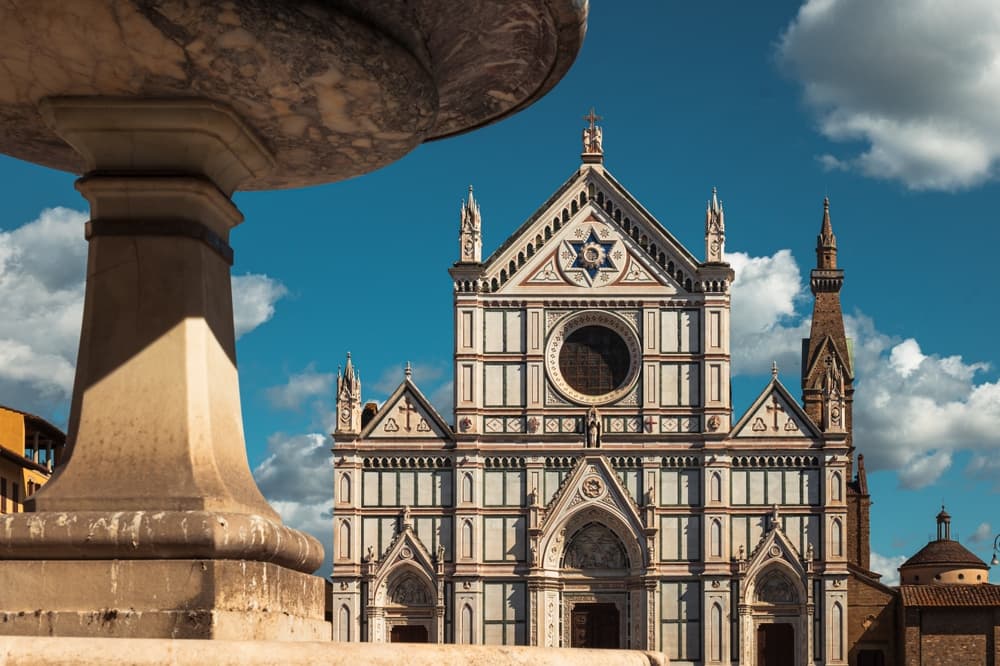
Art and Sculptures at The Santa Croce Church
The Santa Croce Church is a veritable treasure trove of art, housing an impressive collection of paintings, frescoes, and sculptures. The artwork, created by some of the most renowned artists of the time, adds to the church's aesthetic appeal, making it a must-visit attraction for art enthusiasts.
The church's chapels are adorned with frescoes by artists like Giotto, Taddeo Gaddi, and Agnolo Gaddi, their vibrant colors and intricate details bringing the biblical narratives to life. The church also houses an impressive collection of paintings, their themes ranging from religious narratives to portraits of the saints.
The sculptures at The Santa Croce Church, with their intricate detailing and lifelike depiction, are a testament to the artistic brilliance of the time. The church houses several noteworthy sculptures, including the tomb of Michelangelo, adorned with allegorical statues representing Painting, Sculpture, and Architecture, and the tomb of Galileo, adorned with statues representing Astronomy and Geometry.

Special Events and Festivals at The Santa Croce Church
The Santa Croce Church is not just a site of historical and cultural significance; it is also a vibrant hub of events and festivals. The church plays host to a range of events throughout the year, from religious ceremonies to music concerts, adding to its appeal as a must-visit attraction in Florence.
One of the most notable events at The Santa Croce Church is the Feast of the Holy Cross, a religious festival celebrated with great fervor and enthusiasm. The church also hosts concerts and performances, its grand interiors providing a spectacular backdrop for the events.
The Santa Croce Church also serves as the starting point for the historic football match, Calcio Storico Fiorentino. This traditional game, a blend of soccer, rugby, and wrestling, is a spectacle to behold, drawing in crowds from all over the city.
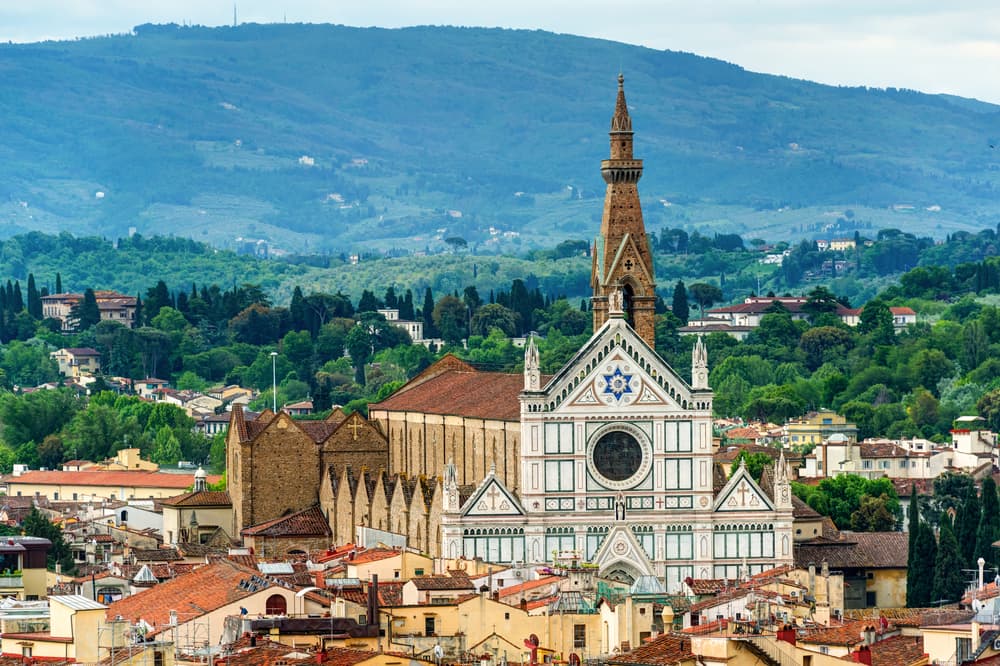
Visitor Information for The Santa Croce Church
Visiting The Santa Croce Church promises to be an enriching experience, offering a unique blend of history, art, and culture. The church is open to the public throughout the year, with guided tours available for those seeking a deeper insight into the church's history and architectural prowess.
The Santa Croce Church also houses a museum, offering visitors an opportunity to delve deeper into the church's history and art collection. The museum, with its varied collection of artifacts, paintings, and sculptures, is a must-visit for history and art enthusiasts.
Visitors to The Santa Croce Church are advised to dress appropriately, keeping in mind the religious significance of the site. Photography is allowed within the church, making it a perfect spot for capturing the splendor of Florentine art and architecture.
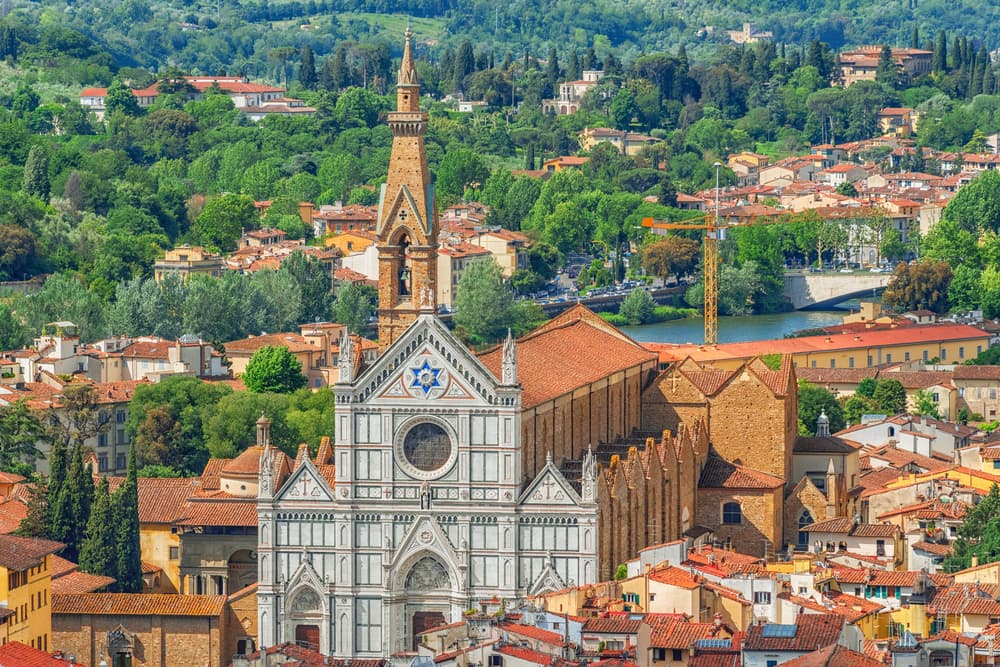
Nearby Attractions to The Santa Croce Church
A visit to The Santa Croce Church can be paired with a tour of the many attractions in its vicinity. The church's central location in the heart of Florence makes it a perfect starting point for exploring the city's many treasures. The Piazza Santa Croce, located adjacent to the church, is a vibrant hub of restaurants, cafes, and shops, offering visitors a taste of Florentine life. The Piazza is also home to the Palazzo Cocchi-Serristori, a Renaissance palace with a beautiful façade. A short walk from The Santa Croce Church leads to the Ponte Vecchio, the iconic bridge that offers stunning views of the Arno River. The Uffizi Gallery, one of the oldest and most famous art museums in the world, is also located nearby, making a visit to The Santa Croce Church a perfect opportunity to delve into the rich artistic heritage of Florence. In conclusion, The Santa Croce Church, with its rich history, breathtaking architecture, and unparalleled art collection, is indeed a must-visit attraction in Florence. Whether one is a history enthusiast, an art lover or simply a tourist seeking a unique cultural experience, The Santa Croce Church offers an unforgettable journey into the heart of the Renaissance.
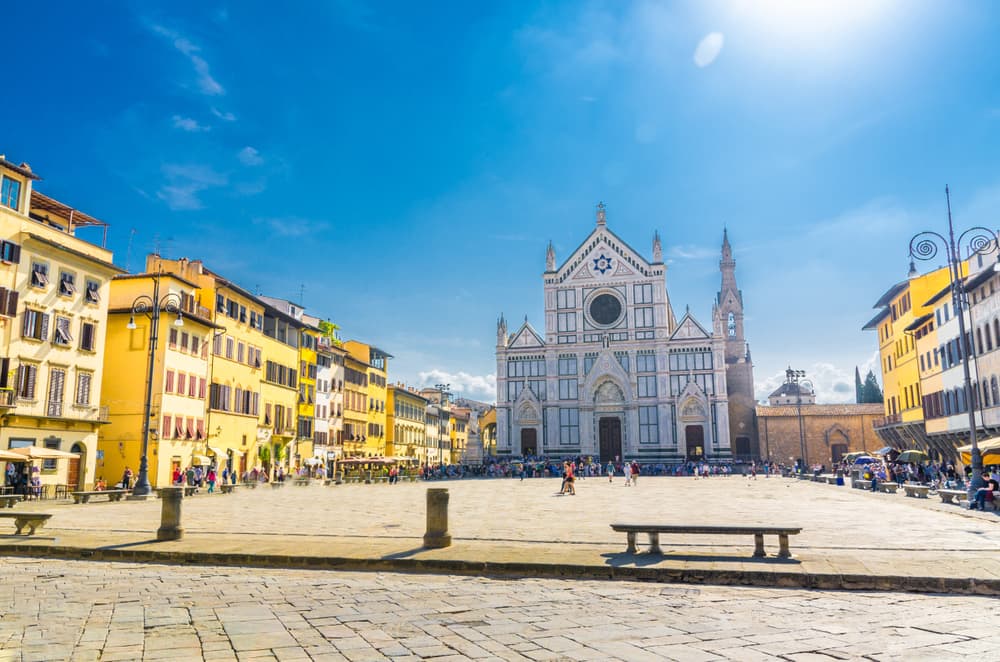
Related Tours
How Excellent is Italy Trip Packages?
Italy Trip Packages is proud to be the best travel agency in Italy, according to our many positive reviews.
Frequently asked questions


